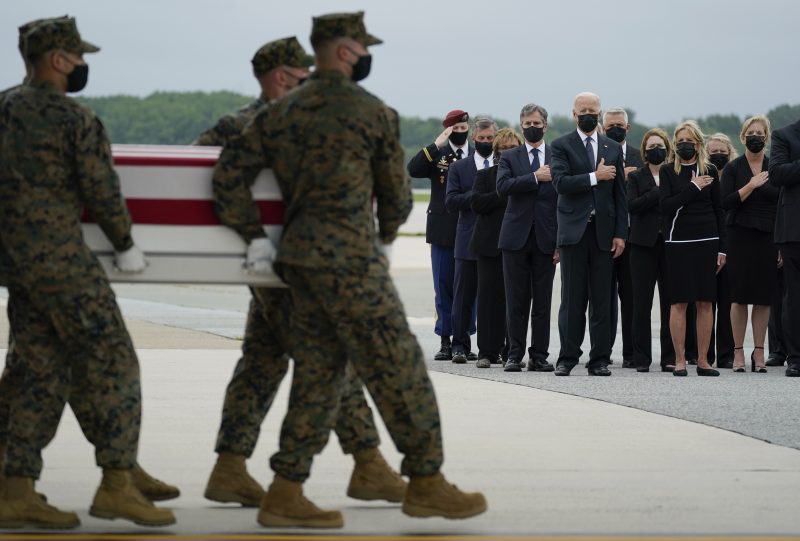The recent tragic events that unfolded in Kabul, Afghanistan, have ignited a wave of controversy and debate, particularly surrounding the actions of the U.S. military in response to the suicide bombing that claimed the lives of 13 U.S. service members and scores of Afghan civilians. A review conducted by the U.S. military has raised questions regarding the initial reports that suggested the Marines had identified the suicide bomber before the attack took place.
The disputed claims revolve around the assertion that the Marines had the Kabul bomber in their sights and were prepared to neutralize the threat before the explosion occurred. The review conducted by the U.S. military challenges this narrative, suggesting that there was no evidence to support the notion that the bomber was specifically identified by U.S. forces prior to the attack.
This revelation has sparked further scrutiny and calls for greater transparency regarding the events leading up to the tragic bombing in Kabul. Many are questioning the initial narratives that emerged in the aftermath of the attack and are seeking clarification on the actions taken by the U.S. military to prevent such incidents in the future.
The review’s findings have not only raised doubts about the accuracy of the information that was initially reported but have also highlighted the complexities and challenges faced by the U.S. military in a volatile and high-stakes environment like Afghanistan. The fog of war, coupled with the fast-paced nature of combat situations, can often result in confusion and misinterpretation of events on the ground.
It is essential for the U.S. military to conduct thorough reviews and investigations following such tragic incidents to learn from mistakes, identify areas for improvement, and enhance the safety and effectiveness of its operations. Transparency and accountability are crucial in maintaining the trust and confidence of the American people and the international community in the military’s actions and decisions.
Moving forward, it is imperative that lessons are learned from the Kabul bombing and that measures are put in place to prevent similar tragedies from occurring in the future. The safety and security of both U.S. service members and civilians in conflict zones must remain a top priority for the military, and efforts should be made to ensure that all necessary precautions are taken to mitigate risks and protect lives.
In conclusion, the disputed claims surrounding the Marines’ alleged identification of the Kabul bomber serve as a sobering reminder of the challenges and uncertainties faced by the U.S. military in combat zones. The review conducted by the military underscores the importance of conducting thorough investigations and maintaining transparency in the aftermath of such tragic events. By learning from past mistakes and implementing necessary changes, the military can work towards enhancing its effectiveness and safeguarding the lives of those who serve on the front lines.


























